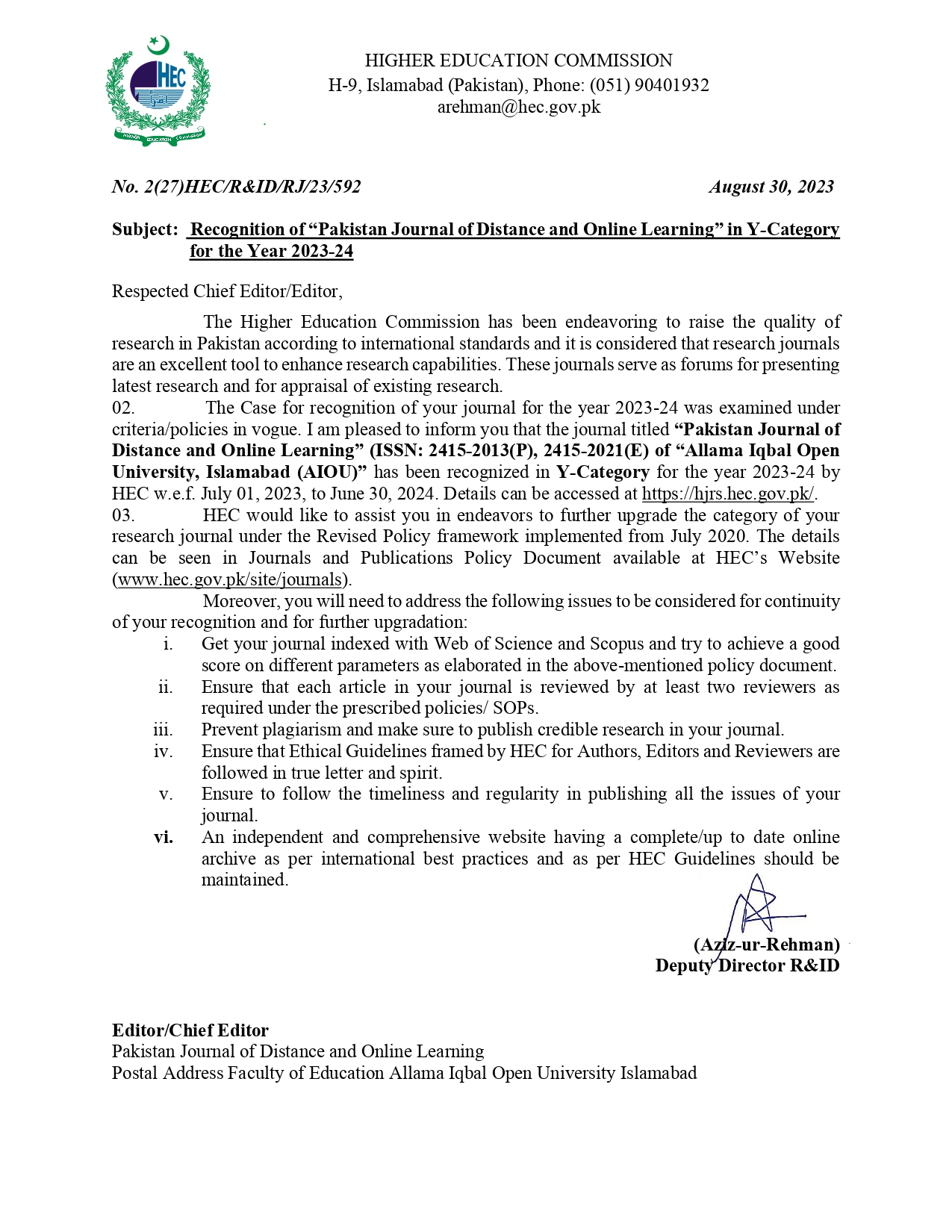Course Reduction Can Reduce Failure Rates of Students: Lessons from The Study of an E-Learning University of Pakistan
DOI:
https://doi.org/10.30971/pjdol.v5i2.278Abstract
Low degree completion rate within the prescribed time due to exceedingly large failure rate of students has become a growing concern for Distance Learning Institutes. High failure rate in courses as much as 70% in freshman courses and 60% in advanced courses as the students proceed to final semesters—are costly to both; the institution and the students. Reducing syllabus in the at-stake courses can generate improved results in terms of students’ passing ratio. Following this hypothesis, current course-redesign intervention employed 30% reduction in the course content to evaluate its impact on students’ failure rate. Results were compared against a set of courses in the control group and also with pre-intervention results of students in the same courses. Independent sample t-test and chi-square test of homogeneity were used in the SPSS to determine the intervention impact. Results were significant against all the hypotheses hence allowing the researchers to conclude that course reduction interventionhas significant bearing on reducing students’ failure rate.
Downloads
Downloads
Published
How to Cite
Issue
Section
License
Authors may photocopy and use their articles without any permission/fee for noncommercial purposes as specified by the Creative Commons Attribution-NonCommercial 4.0 International License. For using work for commercial purpose, please contact on editor.pjdol@aiou.edu.pk .









